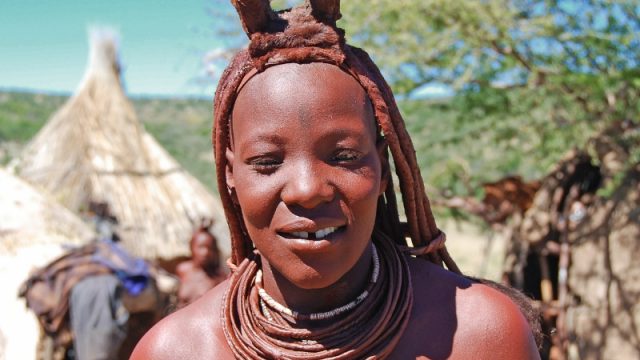Namibia is a relatively small country, averaging just three people per square kilometer and totaling barely over two million people, but has an incredibly diverse culture. There are 12 different major ethnic groups with a large range of tribes among them, and about 30 unique languages are spoken throughout the country. Here are 10 Namibian tribes you didn’t know about.
Sources: The Guardian, Lonely Planet Namibia Guide
This article originally appeared on AFKInsider.com.
1. Damara
The Damara people present one of Africa’s strangest anthropological mysteries. How did a group of hunter-gatherers of West African Bantu origin end up speaking a Khoisan dialect in Southern Africa? Today the Damara live mostly in urban areas and on farms, with only about a third occupying their traditional Damaraland homeland.
2. Nama
The Nama and Damara people share a language group and historically have had conflicts. As a Khoisan group, most Nama are small boned and light skinned, but taller than the most famous bushman group, the San, who also live in Namibia. The Nama are known for their musical and literary talents.
3. San
The earliest inhabitants of the region, and one of the world’s last remaining hunter-gatherer societies, the San people live in Namibia and Botswana. Much is known about the traditional life of the “bushmen,” because from on anthropological level they are one of the most studied people in the world.
4. Himba
The Himba live in the remote Northwest corner of Namibia and many still live a traditional, semi-nomadic lifestyle, raising sheep, goats, and cattle in relative isolation. Many Himba women living in rural villages still go topless and smear their skin with a mixture of butter, ash, and ochre to keep them looking youthful. It works. Even the older Himba women have enviably smooth skin.
5. Kavango
The numbers of Kavango in Namibia swelled in the 1990s when many immigrated from then-warring Angola. This ethnic group is made up of five different subgroups that live mainly in Northern Namibia. Interestingly, the Kavango society is organized according to matrilineal succession when it comes to marriage, inheritance, traditional religious rites, and family matters. On the other hand, the tribe itself is governed by male chiefs.
6. Herero
Originally, the Herero people migrated from Central Africa and have Bantu origins. Today, many are herders living in rural areas where cattle are considered prized possessions. Many rural Herero women still wear dresses like the ones pictured here above that are a throwback to Victorian-era German missionary fashion.
7. Basters
The traditionally light-skinned Basters are mainly descendants of male Dutch farmers living in the Cape Colony and Nama women. Although their name is derived from the word for “bastard,” this fiercely independent group doesn’t let it get them down. Instead, they consider their name a matter of pride because it emphasizes their mixed heritage.
8. Owambo
As Namibia’s largest population group, the Owambo make up most of the country’s ruling SWAPO (South West Africa People’s Organisation) political party. The Owambo are divided into 12 distinct tribal groups, but only eight of the 12 live in Namibia. The other four traditionally occupy Angola’s Kunene region.
9. Tswana
With numbers under 10,000, Namibia’s Tswana people are the country’s smallest ethnic group. They are related to the Tswana of South Africa and Botswana and live mainly in the eastern part of the country.
10. Caprivians
Caprivians live in the country’s extreme Northeast in what was once known as the Caprivi Strip (the region is now being billed as the Zambezi Region). This group has five main tribal groups and many still make a living from fishing, cattle, and subsistence farming.
Related content on AFKTravel:
Fascinating Rituals and Customs of African Tribes
10 African Tribal Traditions You’ve Probably Never Heard Of
10 Things You Didn’t Know About The Himba Tribe
Want to discover the finer side of Africa? Sign up for our weekly newsletter.

